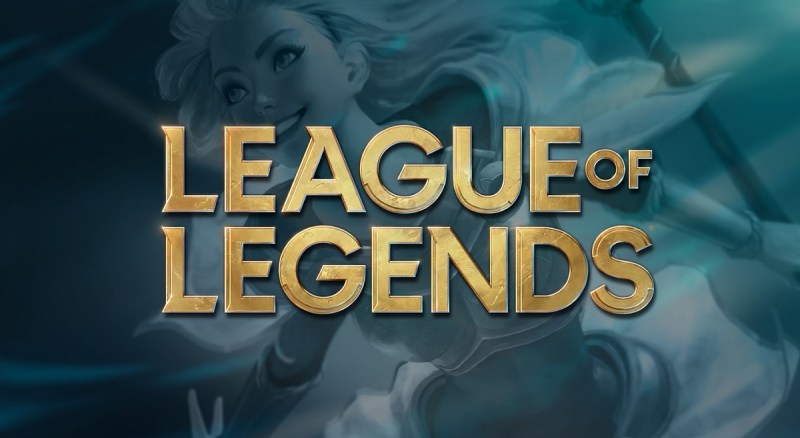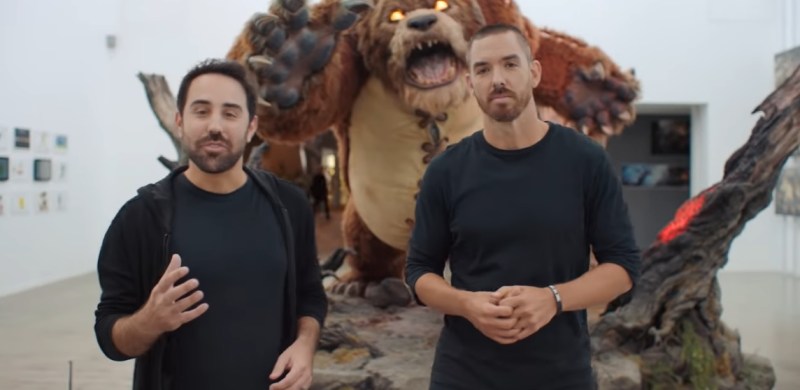League of Legends is a decade old, and it has become a cultural phenomenon, a rare achievement for any video game. It is an esport, a community, and a fantasy world. But for most of the past decade, it has only been one game. Until this week. Riot Games put the “s” back in its name on the 10th anniversary of League of Legends with announcements of new games, films, and animated series.
Riot announced League of Legends: Wild Rift for mobile devices and consoles. It is taking Teamfight Tactics, Riot’s take on Auto Chess, to mobile devices on iOS and Android in early 2020. On the PC, Teamfight Tactics will get a new content drop called Rise of the Elements. Riot is joining the free-to-play strategy card market with Legends of Runeterra in 2020.
The tactical PC shooter codenamed Project A will launch in 2020. Riot is also making an animated League of Legends show, dubbed Arcane, for 2020. Project L is the code name for a fighting game (from acquired developer Radiant Entertainment). Project F is the code name for a project that lets players traverse the world of Runeterra with friends. And League of Legends Origins is a feature-length documentary by filmmaker Leslie Iwerks, available now on Netflix.

Above: League of Legends is turning 10.
That’s a lot of stuff. And in one fell swoop, the Los Angeles-based Riot Games got rid of the putdown that it is a one-hit wonder. Rivals loved to use that to belittle Riot, which has had phenomenal success with League of Legends, which still has 8 million concurrent players daily. I talked with cofounder Marc Merrill about this week’s big announcements in an interview.
June 5th: The AI Audit in NYC
Join us next week in NYC to engage with top executive leaders, delving into strategies for auditing AI models to ensure fairness, optimal performance, and ethical compliance across diverse organizations. Secure your attendance for this exclusive invite-only event.
I asked him if he was familiar with Clay Christensen’s popular 1997 business book, The Innovator’s Dilemma. It’s about how so many legendary companies had both failed to foresee disruption and how they were unable to follow up a big successful business with a second new business, mainly because all of their new efforts paled in comparison to the standards set by the first venture. Given the opportunity cost of assigning staff to a new game compared to assigning staff to League of Legends, it almost always made sense to support LoL.
“That’s something we’ve thought about a lot,” Merrill said. “From our perspective, League of Legends was always viewed as a proof point for the broader company’s thesis. It was always step one for the company. It proved far more successful than we ever expected. It was always our intention to expand. As the world of gaming has evolved, it has continued to evolve around the approach that Riot has of having a long-term direct relationship with players and creating incredible experiences for them that start with games that are much more than a game. We are excited to now be able to start doing that in some other genres. We learned a lot over the last decade.”
Too comfortable?

Above: Brandon Beck (left) and Marc Merrill, cofounders of Riot Games.
Brandon Beck and Merrill started the company in 2006, and in 2009, they launched League of Legends, taking lessons from successful Asian free-to-play game companies like Nexon. League of Legends was one of the first phenomenal Western successes in free-to-play PC games, where players happily pay for items such as new champions, emotes, and skins via microtransactions.
Riot made the game into a seemingly eternally renewable franchise by issuing more items for in-game purchases that made the game seem fresh. This business model enabled Riot to hire a staff of more than 2,500, not counting contractors and build what would eventually become famous as one of the best places to work.
But Riot’s strength in League of Legends also seemed like a weakness. In a decade, it had never successfully launched a new game. Some developers left in order to work on new games, such as the teams that founded studios such as Singularity6, Phoenix Labs, Ganymede Games, Vela Games, and Frostkeep Studios. Enemies such as Blizzard’s Overwatch League and Epic’s Fortnite chipped away at Riot’s audience. It seemed like Riot was getting lazy and too comfortable and that League of Legends was doomed to a slow decline.
Worse yet, an investigation by Kotaku uncovered hidden bias and a culture of sexism against women at Riot, where only one in five employees was a woman. That story shattered the company’s self-described image as a great place to work, and it revealed a dark side to success. That only seemed to further suggest that Riot was a place where success was leading to hubris and a fall.
In the past year, Riot responded to the sexism scandal with some wrenching changes, a greater focus on diversity, and doubling down on its identity as a great employer.
“We shared a lot of progress about living up to our values of being this great place to work,” Merrill said. “Every Rioter cares about the company. People are excited to show other people what they have been working on.”
Competition is never kind to such companies. Valve rode the waves of success on its Half-Life games. It built its successful PC game store, Steam, and collected a 30% tax on every game sale. But it never launched Half-Life 3. And then Epic Games came along with Fortnite, which generated enough money to make the rival Epic Games Store into a Steam rival, taking only a 12% cut. That disrupted Valve, and it seemed like Riot was ripe for its own disruption, as Christensen foresaw in his book in examples of so many other industries.
Opportunity costs

Above: League of Legends
To give Riot the benefit of the doubt, people forgave the company for some of these problems because League of Legends was so good and because the quality bar of Riot was so high that the company canceled games that didn’t meet the high bar. Two other very successful game companies, Blizzard and Supercell, are famous for trying out new games and shutting them down. But unlike Blizzard and Supercell, Riot almost never publicly tested any new games. Its prototypes were dying before they ever saw the light of day.
“It was really just around a deliberate focus,” Merrill said. “We needed to invest heavily in League of Legends, support the community in the right way. It was the easiest thing in the world to figure out how much more potential League of Legends had. You put your player hat on — with all the features we hadn’t delivered and all the different pain points our players experienced and all the different content opportunities that existed.”
So Riot invested in community support, established the infrastructure to support 13 esports leagues around the world, built out its publishing business — all for League of Legends. Riot was forced to manage things in-house that it didn’t really want to do. All of that was a kind of mud for moving into innovative territory. It seemed like it was quite easy for Riot to do nothing.
“Ideas are a dime a dozen. It’s truly about execution. We’ve never had a shortage of ideas,” Merrill said. “Our challenge has always been throughput. It’s a similar challenge for new games. There is an opportunity cost challenge where we didn’t want to pull people off League of Legends to start incubating future titles when it felt like a disservice to the community” for League of Legends.
He added, “That’s why we had to scale the organization. To build new teams and attack established genres, the players had incredibly high expectations. You don’t show up and build an incredible world-class team overnight to compete with the best titles in the world. That takes a long time. It’s a fairly exciting time for Rioters because we were working on this stuff for a long time. We were fortunate we were able to take a long-term perspective. We can finally show it off. A lot of the mindset from an innovation standpoint comes from our mission of aspiring to be the best game developer in the world.”
Adapting to a world of disruption
But this week, Riot shattered a lot of the arguments of the critics, which included me. Now its behavior isn’t so easy to pigeon-hole as the kid that got rich quick and then got too lazy to do anything new.
Behind the scenes, it turns out it has been working hard. Its teams have been productive in building things beyond League of Legends. Through films and animated shows, it is busy building out the lore that motivates players to stay involved with the franchise and the esports tournaments. The company has already launched Teamfight Tactics, and it is launching a bunch of new things all at once in 2020.
Riot greenlit these games because they were like the original League of Legends, which felt like a niche in the multiplayer online battle arena (MOBA) genre. These new filled a niche, and they represent an attempt to serve those gamers in their respective niches really well, Merrill said. He wants the Riot name on these games to mean that fans will be able to trust the product as serving fans well.

Above: Riot’s European competition for League of Legends.
“There is absolutely no mandate that they are bigger than League of Legends,” Merrill said. “The game needs to be great for what they are trying to do. It’s relative to the opportunities that we perceive. The primary goal is to make it sustainable so we can keep doing awesome things for players. That’s how we think about esports. Historically, we have invested an awful lot for a long period of time. And now the revenues are really really growing very rapidly. We see a path to profitability. These things take time to nurture. It’s hard to grow well. It’s hard to grow fast. And it’s incredibly hard to grow well and fast.”
Christiansen found in The Innovator’s Dilemma that some companies were able to adapt. Andy Grove, the former CEO of Intel, famously held a conversation with cofounder Gordon Moore about the company’s original memory chip business and its fledgling business in microprocessors. Grove asked what would happen if they were fired and a new CEO came in. Moore responded the new CEO would shut down the declining memory business and go all-in on microprocessors. Grove responded, “Why don’t we do that?” They did so, and Intel was perfectly positioned to supply processors to IBM for its original personal computer. And that turned Intel into a tech giant.

Above: Andy Grove, former CEO of Intel. He passed away in 2016.
And so Riot has a chance to disrupt itself before others do. It has been behaving more like a duck that seems calm on the surface but is really paddling like heck underneath the water. It turns out that many of the games made progress in parallel, Merrill said, and so they look like they’re all going to be ready at the same time. Each game the company is working on has the Riot DNA, Merrill said. These games should add to the genres in a meaningful way for the players who really appreciate these genres, he said.
As for the company, “We think Riot is not really well understood,” Merrill said. “A lot of people perceive us as a League of Legends company or a PC gaming company or a free-to-play company or strategy games. None of that captures what Riot is all about. We try to capture gamers with the highest expectations, the deepest expertise, and we’ll do any business on any platform to serve them well.”
Not everything is all rosy. Riot still has to earn back credibility on the diversity front, and it will have to properly navigate issues like its stance on not allowing players to talk about politics like the Hong Kong protests against China.
Assigning the right number of staff to the existing game and allocating the right number to new opportunities isn’t easy. It turns out that running Riot Games itself is like a real-time strategy game.
“The RTS game of resource allocation at a studio is a really complex and fun game, for anyone who is into that,” Merrill said.


